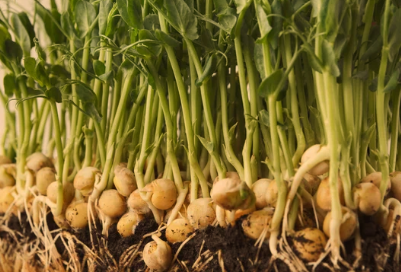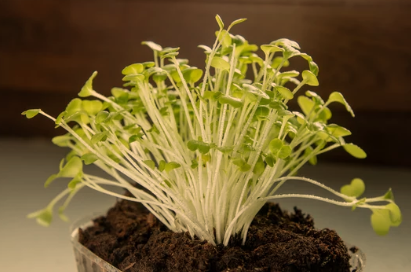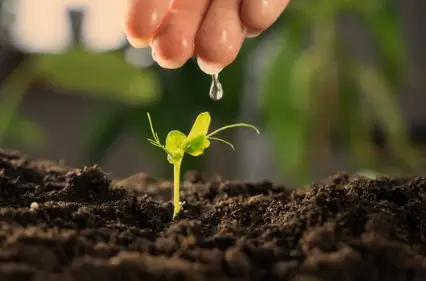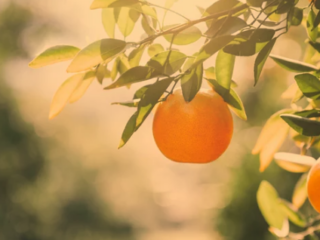Mustard seeds, known for their distinct flavor and culinary uses, have a rich history and are widely cultivated around the world.
This blog post explores the origins, cultivation practices, and global distribution of mustard seeds, shedding light on where this versatile crop grows.
Where Does Mustard Seed Grow?

Mustard Seed Grow
Mustard seeds are cultivated in various regions around the world, adapting to diverse climates and soil conditions.
They thrive in cool to warm regions with adequate rainfall, typically preferring temperatures between 10°C to 25°C (50°F to 77°F). The crop requires well-drained, fertile soil and a minimum of 500 mm (20 inches) of annual rainfall.
Some of the major mustard seed-producing countries include Canada, India, Nepal, China, Russia, and the United States. Canada, particularly the Canadian prairies, is the largest global producer of mustard seeds, cultivating primarily the brown and oriental varieties
Origins of Mustard Seeds

Where Does Mustard Seed Grow
Mustard seeds belong to the Brassicaceae family and have been cultivated for thousands of years.
The exact origin of mustard seeds is difficult to pinpoint due to their widespread cultivation, but historical evidence suggests that they were first grown in the Mediterranean region and ancient Mesopotamia.
The ancient Greeks and Romans highly valued mustard seeds for their medicinal properties and culinary applications.
Over time, mustard seeds spread to various parts of Europe, Asia, and Africa through trade and exploration.
They became an important crop in regions such as Egypt, Persia (modern-day Iran), and India.
Mustard seeds found their way to the Americas through European colonizers and were subsequently cultivated in North and South America.
Climatic Requirements
Mustard seeds are adaptable and can be grown in diverse climates.
However, they thrive in cool to warm regions with adequate rainfall. Ideal temperatures for mustard cultivation range between 10°C to 25°C (50°F to 77°F).
The crop prefers well-drained, fertile soil and requires a minimum of 500 mm (20 inches) of annual rainfall.
Mustard plants also benefit from full sun exposure for proper growth and development.
In regions with extreme temperatures, mustard crops may be planted as winter or spring varieties. Winter varieties are sown in late summer or early autumn and grow during the cooler months, while spring varieties are sown in early spring and harvested in summer.
Major Mustard-Producing Countries
1) Canada
Canada is the largest producer of mustard seeds globally, particularly the brown and oriental varieties. The Canadian prairies provide an ideal environment for mustard cultivation, with regions like Saskatchewan leading the way in production. The cool climate, fertile soil, and adequate rainfall in these regions favor mustard seed growth.
2) India
Mustard seeds have significant cultural and culinary importance in India. The country is a major producer, with Rajasthan, Uttar Pradesh, and Madhya Pradesh being key growing regions. Mustard cultivation in India is largely rainfed, and farmers benefit from the monsoon season for irrigation.
3) Nepal
Nepal is renowned for its high-quality mustard seeds, with the Terai region and the mid-hill areas producing a substantial amount. The fertile soil and suitable climate in these regions contribute to the success of mustard cultivation.
4) China
China is a significant mustard seed producer, primarily cultivating the yellow variety. Regions such as Sichuan, Yunnan, and Guizhou have favorable conditions for mustard cultivation. The moderate climate and fertile soils in these areas provide an ideal environment for mustard plants to thrive.
5) Russia
Russia cultivates both yellow and brown mustard seeds, with the primary growing regions located in the southwestern part of the country. The climate in these regions, characterized by warm summers and sufficient rainfall, supports mustard cultivation.
6) United States
The United States, particularly North Dakota, Montana, and Idaho, is a prominent producer of mustard seeds, mainly the yellow variety. These regions offer suitable climatic conditions and fertile soils for mustard cultivation.
Other Mustard-Growing Regions
Mustard seeds are grown in several other countries, including Australia, Argentina, Ethiopia, Ukraine, France, United Kingdom, Bangladesh, and Pakistan. Each of these regions has specific climatic conditions that support mustard cultivation to varying degrees.
In Australia, the states of South Australia and Victoria are major mustard seed producers. The Mediterranean climate and fertile soils in these regions favor mustard cultivation. Argentina, with its temperate climate, cultivates both yellow and brown mustard seeds, primarily for oil extraction.
Ethiopia, known for its diverse agricultural practices, grows mustard seeds, particularly in the Amhara and Oromia regions. The country’s highlands provide suitable growing conditions for this crop.
Ukraine, with its fertile black soil, is emerging as a mustard seed producer. The country benefits from its favorable climate and cultivates mustard for both domestic consumption and export.
France and the United Kingdom have a long history of mustard production, particularly for culinary purposes. The regions of Dijon in France and Norfolk in the UK are famous for their mustard production, with specific varieties like Dijon mustard gaining international recognition.
Bangladesh and Pakistan also cultivate mustard seeds, primarily for oil production. The warm climate and fertile soils in these regions contribute to successful mustard cultivation.
Conclusion
Mustard seeds are cultivated across the globe, adapting to diverse climatic conditions and finding their place in numerous cuisines.
From the vast fields of Canada to the hills of Nepal and the farms of India, mustard seeds have become a staple ingredient in countless recipes.
Their versatility, combined with their ability to grow in different regions, has contributed to their widespread popularity.
Understanding the origins and cultivation practices of mustard seeds allows us to appreciate their global presence and enjoy the flavors they bring to our plates.
In conclusion, mustard seeds are a vital crop that has thrived across continents.
Their history, adaptability, and versatility have made them an integral part of various cuisines worldwide.
Whether you’re enjoying a classic mustard sauce or exploring new flavors, remember that behind these tiny seeds lies a story of cultivation and growth that spans the globe.
Reference
- “Mustard.” The Epicentre. Available at: https://theepicentre.com/spice/mustard/
- “Mustard Seeds – Cultivation Practices.” Agricultural Marketing Resource Center. Available at: https://www.agmrc.org/commodities-products/grains-oilseeds/mustard-seeds/
- “Mustard.” National Center for Home Food Preservation. Available at: https://nchfp.uga.edu/how/can_03/mustard.html
- “Mustard Production in Canada.” Government of Canada. Available at: https://www.agr.gc.ca/eng/agricultural-practices/crops/mustard/?id=1175045319153




